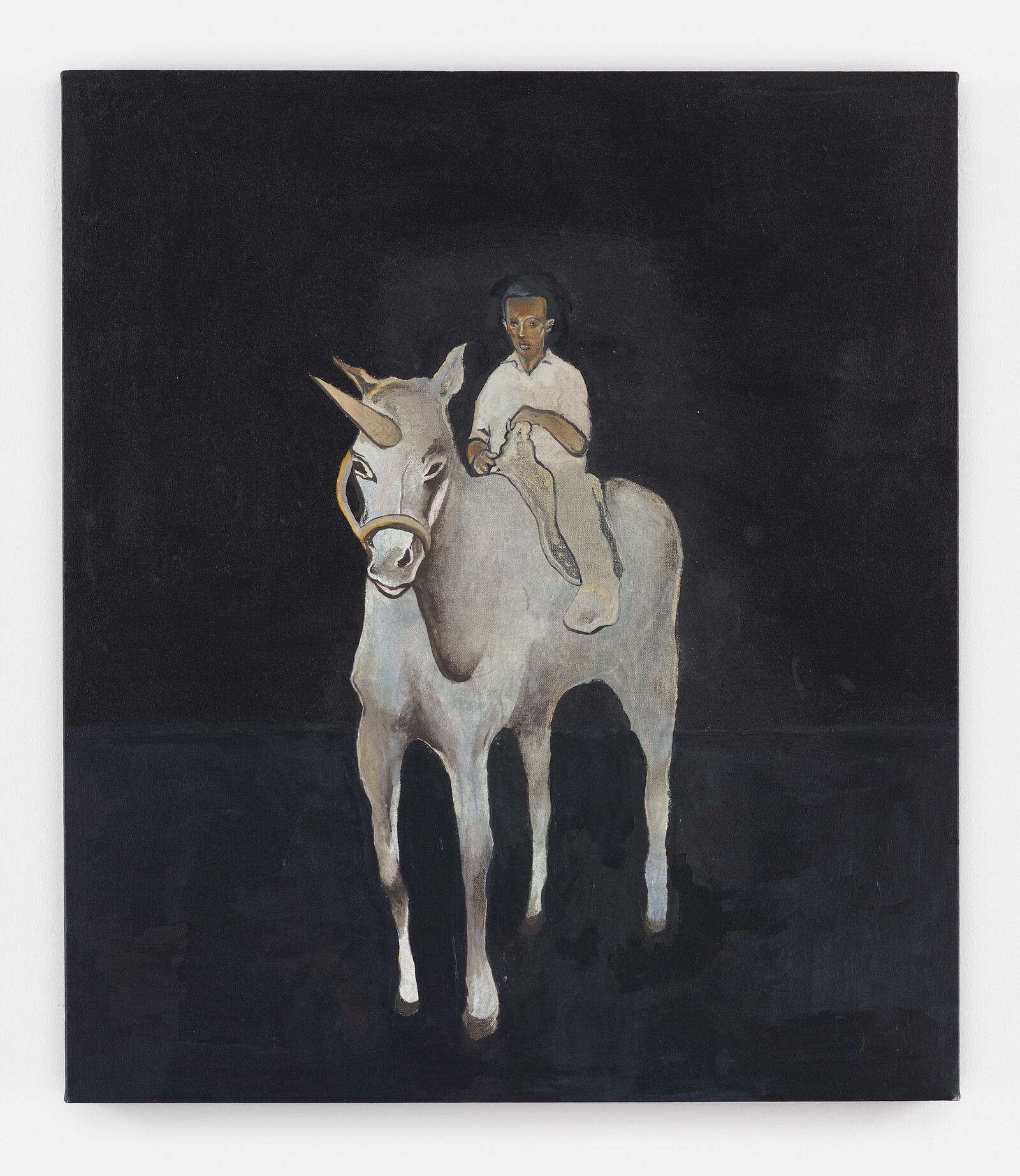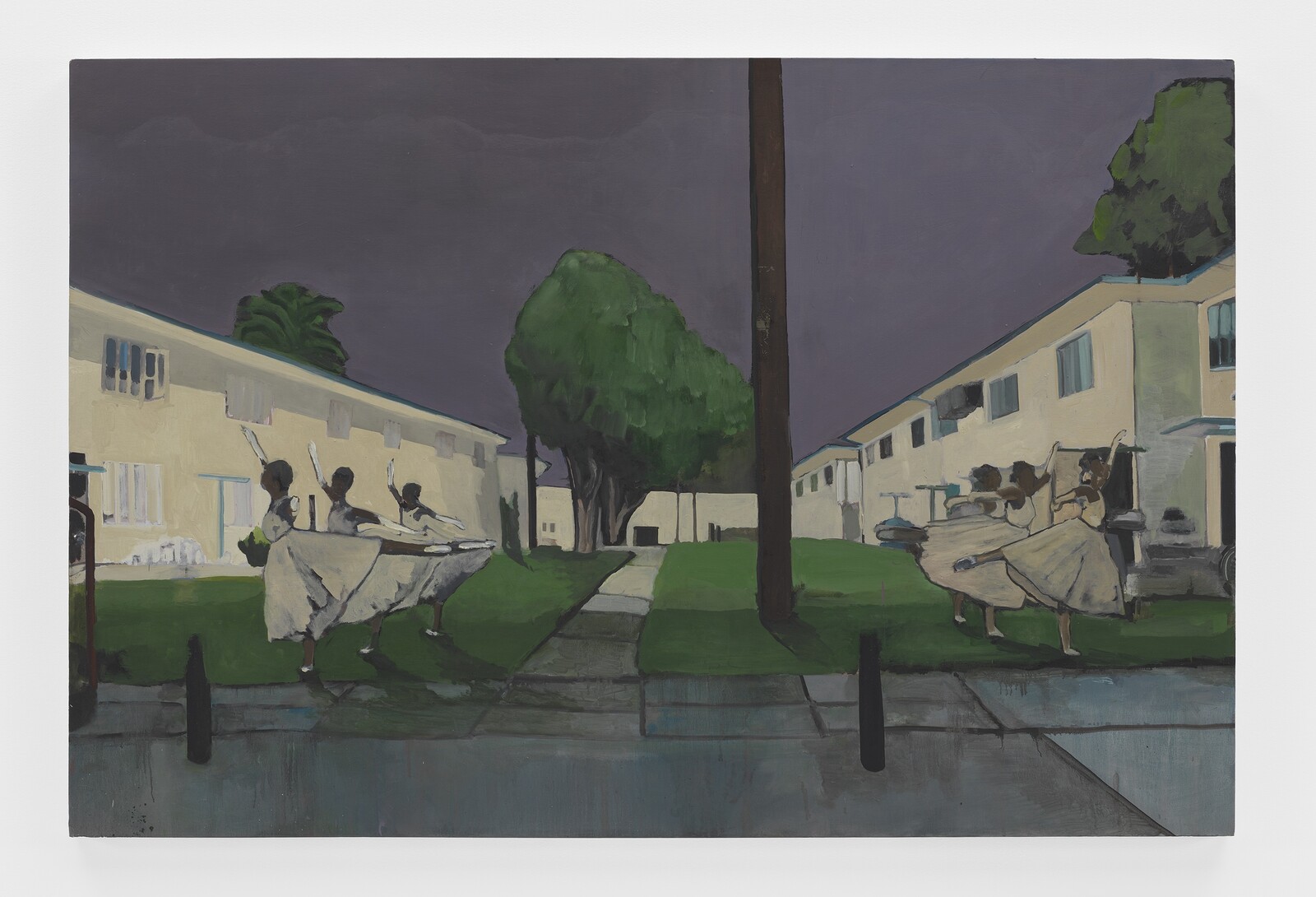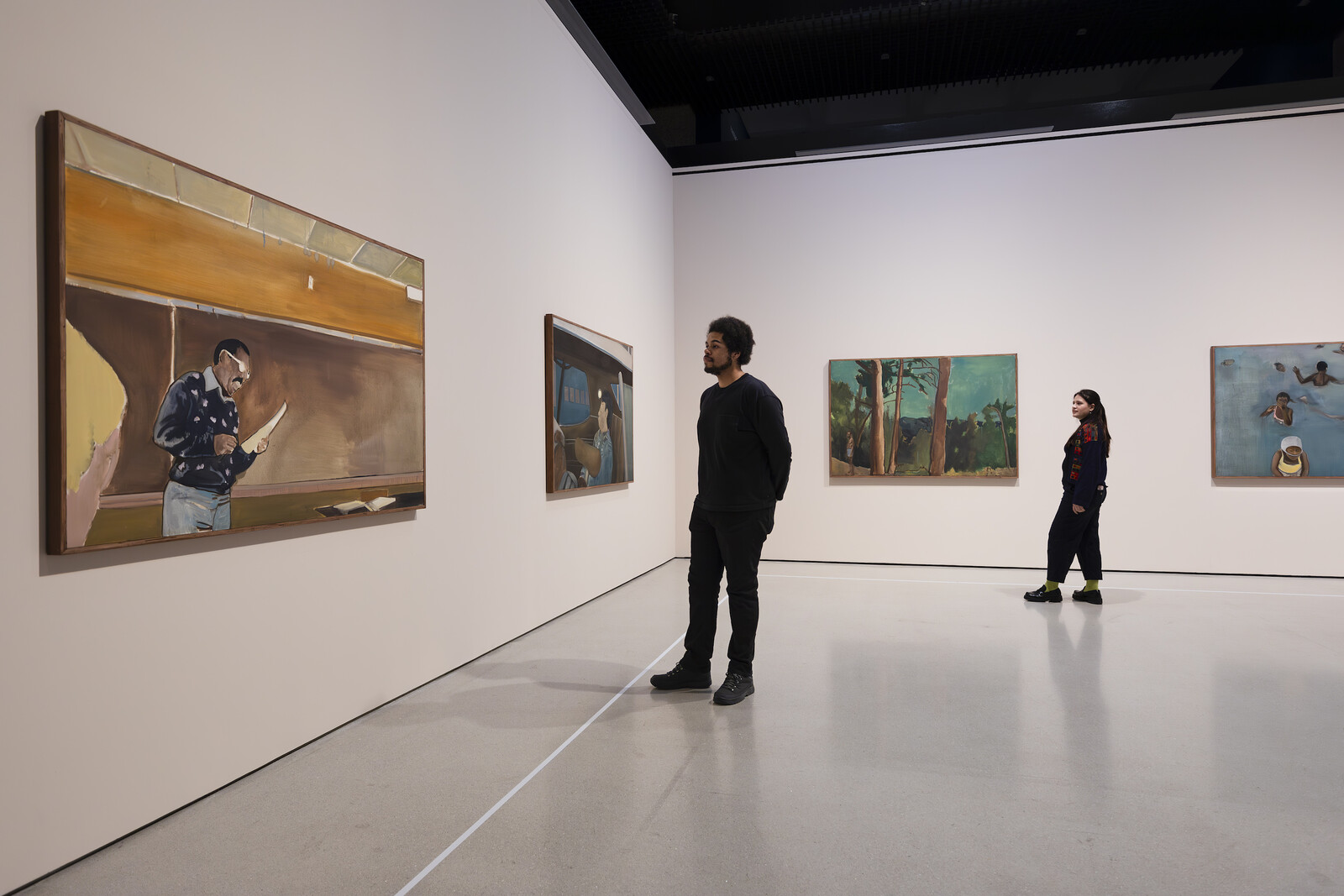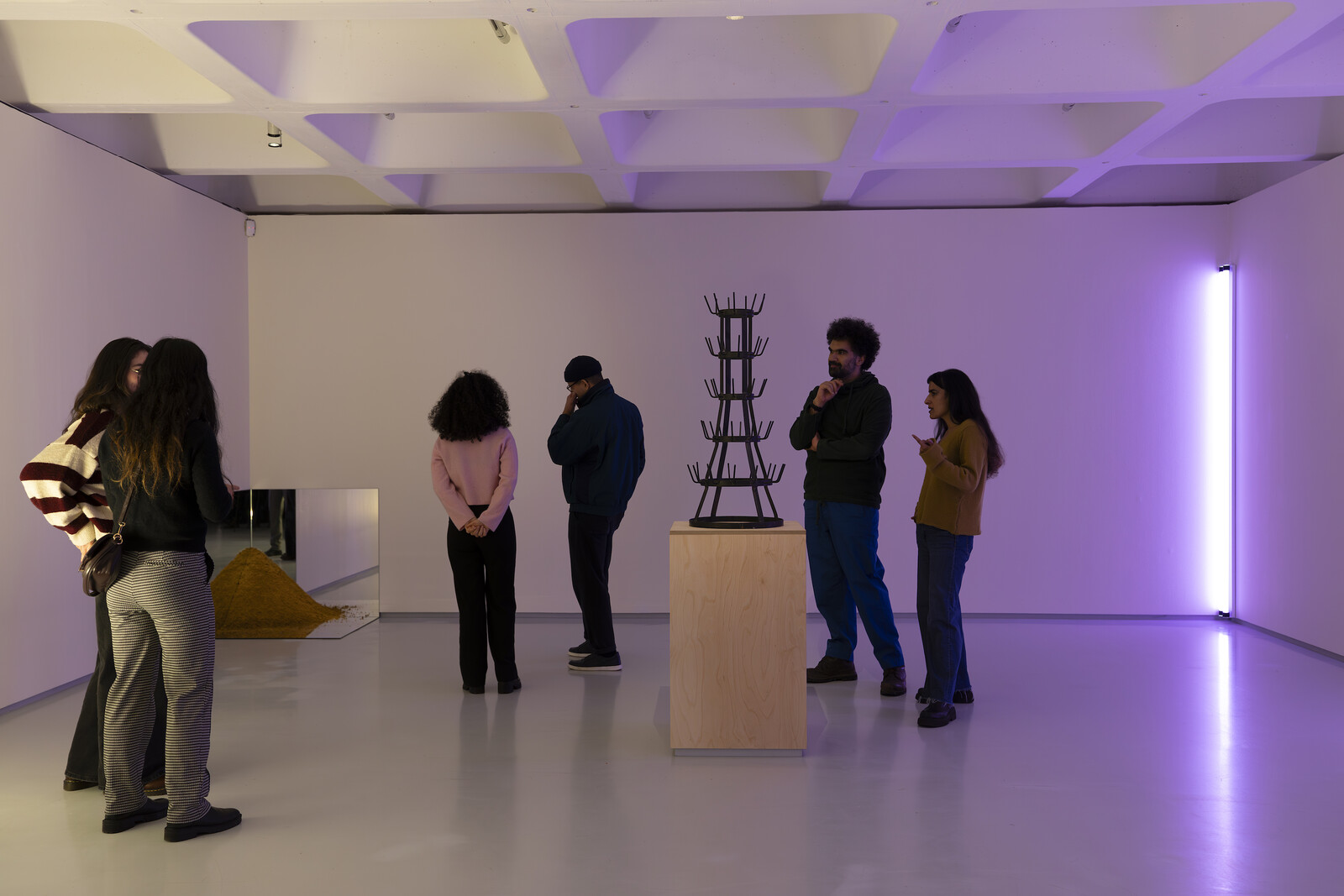This retrospective cements Noah Davis’s legacy as a multifaceted artist whose influence is only beginning to be felt and understood. Curated chronologically, it breaks the sections up in themes relevant to his practice and short life—Davis died in 2015, aged just 33—and gives a central place to The Underground Museum that he founded with his wife, the artist Karon Davis, in 2013. A cultural nerve center for the Los Angeles neighborhood of Arlington Heights, the community museum promoted access to art for all and, until its closure in 2022, extended the key concern with locality and social fabric that is essential to understanding Davis’s work.
That enthusiasm for and engagement with community is most obviously evident in Davis’s best-known paintings, which feature regular people, going about their lives, doing seemingly mundane things. He’d sometimes paint from memory, and at other times used photographs as reference material: his series “1975” was based on photos his mom took as a high school senior in Chicago. These paintings, at once intimate yet slightly detached, capture snapshots of ordinary lives and monumentalize them in his signature dry style. When not drawing directly from the quotidian, Davis turned to mythology and the imagination, and so viewing these paintings is like waking up from a dream and trying to piece it together, to recollect the faces of the people that appeared within it, coming up short, and filling in the gaps with hazy approximations. Yet even here the same preoccupation with history and society is present.
Steadying these wobbly dreamscapes are bleak facts folded in with the fantastical. In the somnolent 40 Acres and a Unicorn (2007), hung in the dimly lit upper galleries, a man enveloped by an amorphous black background sits atop a unicorn. The title is a callback to the “forty acres and a mule” proclamation of 1865, a form of reparations proposed during the Civil War that would take land from slave owners and give it to formerly enslaved people. This never took place, and like the idealized “mule” set against an emptied landscape, turned out to be mere fantasy. Other works in this section (“Domestic Spirits”) take stereotypes of Black culture (Bad Boy for Life, 2007, or Single Mother with Father out of the Picture, 2007–08) and suffuse them with Davis’s surreal brand of critique and humor.
In his other figurative works, Davis looked to Ancient Egypt as an enduring African civilization and source of inspiration for Black artists.1 The Met’s recently closed “Flight into Egypt: Black Artists and Ancient Egypt, 1876–Now” included an untitled painting by Davis from 2010 that features the Great Sphinx of Giza as though it’s been carved into the rock face of a mountain. To the left of the sphinx is a face held up by a beam jutting out of the mountain with a ladder at the base, implying it’s still under construction. Back at the Barbican, Isis (2009) depicts Karon dressed as the titular goddess holding her wings open. She makes another appearance as her younger self in 1984 (2009), based on one among Davis’s collection of analog photographs, displayed here in a vitrine. He gathered these photos from loved ones, but also picked up images of strangers found at swap meets, creating an archive of documentations of Black life that he later extended into the digital sphere, broadening his practice to that of a collector and curator of visual culture.
He continued that role at the Underground Museum, represented here by two reconstructions of past shows. A meditation on the creative process, Journey to the Moon (2003) by William Kentridge, whose work also has surreal, dreamlike reverberances, is given its own space downstairs. Upstairs, there is a restaging of the museum’s inaugural exhibition “Imitation of Wealth,” on a smaller scale than the original. When museums proved reluctant to lend artworks to this new venture in Central Los Angeles, Davis decided to remake work by artists such as Marcel Duchamp (the 1914 bottle rack), Jeff Koons (one of the 1980s vacuum cleaner sculptures), and Dan Flavin (some purple-hued strip lights) instead. The name of the show is another in-joke: it’s a nod to Imitation of Life, Fannie Hurst’s 1933 novel about racial passing in the early twentieth century.
Towards the end of the show are the small-scale collages that Davis created while undergoing chemotherapy. Affixed to archival paper painted in washes of color are more sketches on paper, photographs, and images clipped from magazines. Viewing these constellations of things he cared for offers an insight into his innermost workings as an artist. I come to understand his other works as collages too: bringing together social history, mythology, community work, and the documentation of everyday life into an expanded understanding of what painting could be. This might explain why, when Davis was asked in a 2009 interview what motivated him to be a painter, he replied, “I just couldn’t do anything else. I’d rather fail at painting than be successful in anything else.”2
Though many great works of visual art, music, performance, and literature have come from the Black, mostly sub-Saharan African diaspora looking to Ancient Egypt as a source of inspiration and an ancestral homeland of sorts, in recent years there has been a reappraisal of this relationship. See: Vivian Yee, “Egypt Spars With Dutch Museum Over Ancient History,” New York Times (June 18, 2023), https://www.nytimes.com/2023/06/18/world/middleeast/egypt-african-dutch-museum.html.
“Shelley Wade interviews Painter Noah Davis,” All the Rage with Shelley Wade (April 8, 2009), https://www.youtube.com/watch?v=dVgVkMUNejk.






